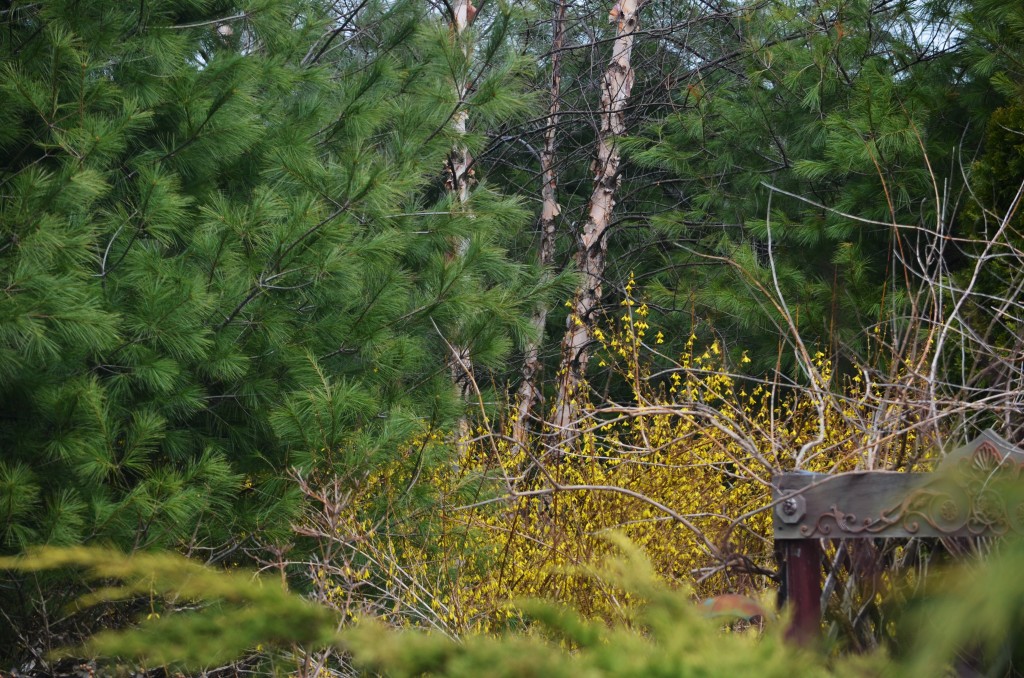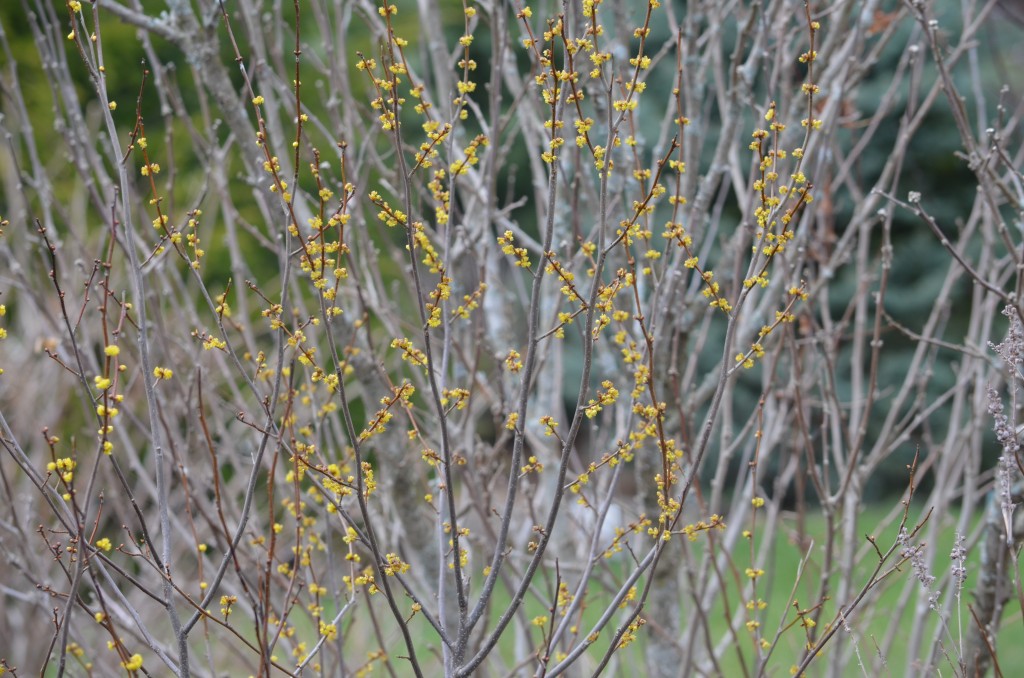Today, as I see yet another post on a garden blog dissing forsythia, I feel it is time to jump in and stand up for what is to me one very useful workhorse plant.
Let me say to begin with, that I think forsythia gets it’s bad rap from a couple of things.
First, the insane pruning that some people subject it to . It is a naturally large and arching bush. Left to its own devices it will fill out nicely and cover some space . Pruned into a short squat hedge or round blob it looses all it natural grace and it will never fill out as densly as boxwood or even privet which both make better hedge choices.
Secondly, it all comes down to the cultivar. Just like many other shrubs, the named varieties are often better than the species .The one I grow had long lost it’s tag , but it tops out at about 8 ft. and has a lovely shape and warm golden yellow flowers. Forsythia came to be in my yard in a very interesting way. I was installing some large birch and pine trees out back and we had them delivered here. The nursery worker who was lugging them via dolly out back stopped to admire my new rock garden and we got to talking. I was telling him that we were planting the birches and pines out back to mimic the natural landscape around us and I was stuck trying to come up with an front of the woodland understory shrub that could handle the poor soil and lack of irrigation and block the view to the neighbors . He suggested forsythia, and I went back to the nursery with him and bought them. Fifteen years later they are beautiful graceful shrubs that not only explode with color heralding spring, but tolerate the worst conditions on my property without dropping a leaf. Here you can see them just peeking out from the woods )
Don’t get me wrong,I adore all other kinds of spring flowering shrubs and grow many including the lindera benzoin or spice bush which I often recommend to haters , ahem, people , as a forsythia alternative ( here they bloom at the same time) . They all have their place and they all fill an important role in the garden. Up close and personal, bushes like spirea ogon are cool to look at for their leaves , cornus mas has a lovely shape and looks stellar as both a backdrop and specimen plant, and viburnum carlessii and lonicera fragrantissima have to die for fragrance. But , planted at a distance and backed up by evergreens, nothing beats a line of forsythia exploding into what I like to call “spring YELL-ow”.
They all have their place and they all fill an important role in the garden. Up close and personal, bushes like spirea ogon are cool to look at for their leaves , cornus mas has a lovely shape and looks stellar as both a backdrop and specimen plant, and viburnum carlessii and lonicera fragrantissima have to die for fragrance. But , planted at a distance and backed up by evergreens, nothing beats a line of forsythia exploding into what I like to call “spring YELL-ow”.
I know many of you are on the anti forsythia bandwagon. Even Henry Mitchell, the late Washington Post garden columnist whom I adored (and still reread his books annually), called the large installation of forsythia at Dunbarton Oaks an “asinine feature”. Sure there are many more “sophisticated ” options to use, but I encourage you as gardeners to open your mind to see how a very common plant can be used very effectively if you plant the right cultivar in the right location . ( Photo below from Bangor Times, yet another good placement!)